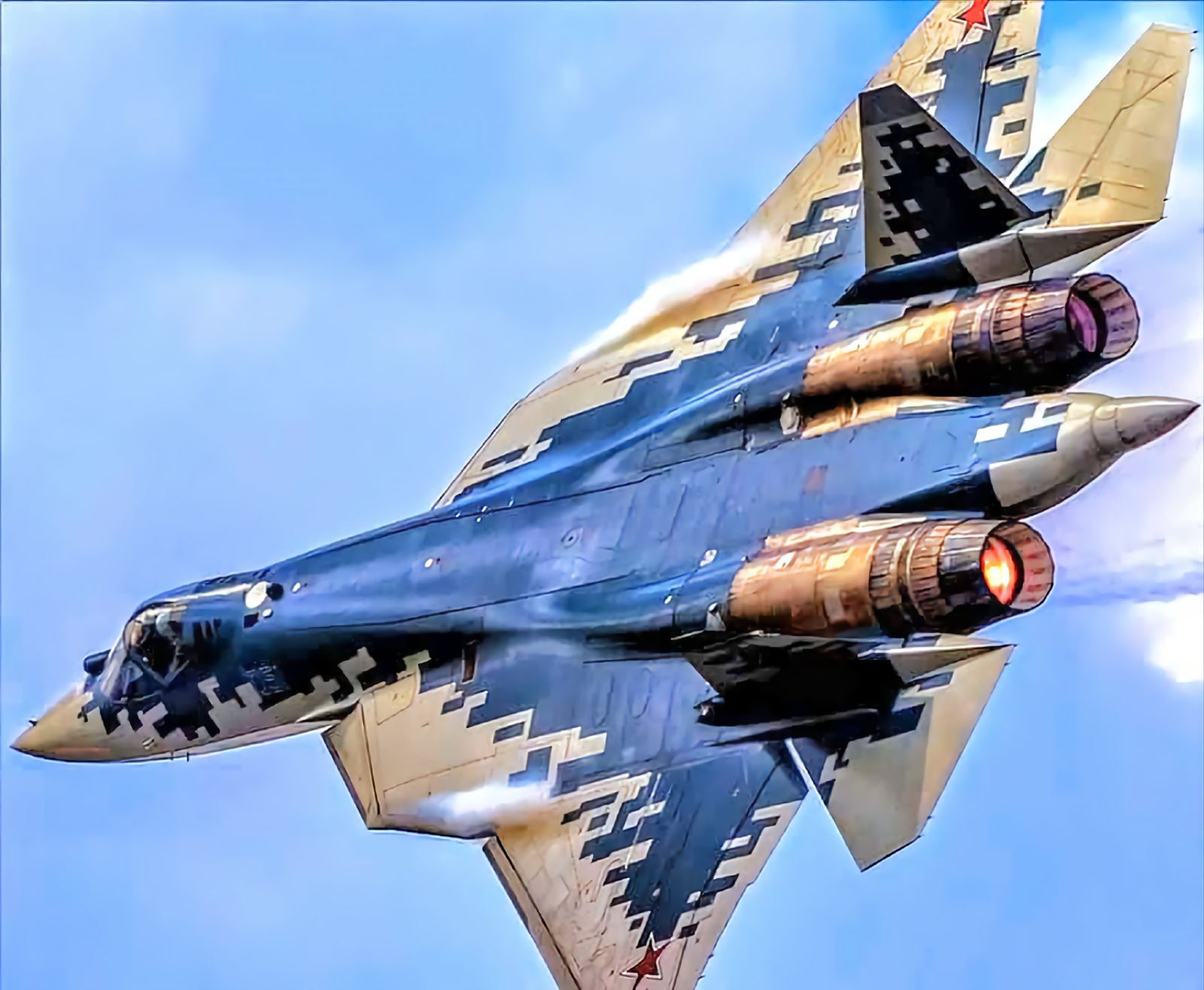The ex-deputy Chief of the General Staff of the Russian Navy revealed plans to develop a naval variant of the Su-57 fighter jet for carrier-borne operations in the future.
Vice Admiral Vladimir Pepelyaev revealed the Su-57 plan while discussing his new book, “Aircraft Carrier,” indicating a strategic consideration for Russia’s future naval capabilities.
This revelation coincides with China’s strides in the development of the J-35 stealth fighter, a carrier-based variant of the FC-31 specifically designed for operations on Chinese aircraft carriers.
The development of a carrier-based stealth fighter jet marks a transformative stride for China’s naval aviation prowess, catapulting it a generation ahead of its existing carrier-capable fighter, the J-15.
This development raises questions about Russia’s potential plans for next-generation fighter jets in its Naval Aviation fleet.
During the interview, the former Russian Navy officer was asked about the potential replacement of the MiG-29 carrier-based fighters. Pepelyaev suggested that both the Su-33, originally designed for deployment on the Kuznetsov aircraft carrier, and the MiG-29 should continue their service.
He emphasized the effectiveness of these aircraft and proposed that their modernization potential has yet to be fully explored. Specifically, he mentioned enhancements to landing support systems for the MiG-29 during maintenance.
Regarding future developments, Pepelyaev mentioned that the fifth-generation Su-57 fighter jet is being considered for carrier-based operations. However, he noted that the realization of a carrier-based version would depend on consistent funding availability.
Additionally, he said that significant upgrades, including new and advanced acceleration and braking systems, would be necessary for its deployment on a prospective aircraft carrier.
However, Pepelyaev explained that the Su-57 would not be deployed from the Kuznetsov aircraft carrier, citing the need for a more comprehensive modernization to accommodate the Su-57 fighter aircraft.
He added that such an endeavor would necessitate substantial funding and time, which are currently unavailable. “Most likely, Kuznetsov will remain a “springboard” until the end of the service,” he concluded.

Russian Navy Needs Four Aircraft Carriers
The former vice admiral stressed the need for the Russian Navy to maintain aircraft carriers. He asserted that for a nation like Russia, aspiring to be a major maritime power, a fully-equipped aircraft carrier fleet is indispensable, citing historical precedents and contemporary strategic imperatives.
Regarding the timeline for implementing an aircraft carrier construction program, Pepelyaev highlighted the need to meticulously assess various factors.
He said it is important to carefully assess industrial capabilities, especially in shipbuilding, before implementing an aircraft carrier construction program. He noted that current priorities include addressing global security challenges and rebuilding naval losses.
Russia currently has one aircraft carrier, the Admiral Kuznetsov, which entered service in 1991. The aircraft carrier has encountered a multitude of issues throughout its operational history.
However, when asked about the number of aircraft carriers needed for the Russian Navy, the former vice admiral suggested that at least four aircraft carriers would be required: two for the Pacific Fleet and two for the Northern Fleet.
He said that with adequate logistical and technical support, this allocation could maintain an operating stress coefficient (OK) of 0.5, ensuring that the fleet commander always has at least one combat-ready aircraft carrier available for any task, including unforeseen circumstances.

Regarding ships of other classes, including those essential for the combat stability of an aircraft carrier, such assessments are conducted by relevant directorates within the Main Command of the Navy, based on inputs from military scientists, said Pepelyaev.
Pepelyaev also noted that in the 2010s, following directives from the Ministry of Defense, the Krylov Center, in collaboration with the Nevsky Design Bureau and aviation research institutes, conducted comprehensive research on the design of future aircraft carriers.
This effort resulted in the proposal of six potential designs for a next-generation aircraft carrier, one of which featured a nuclear power plant. Of those projects, the new nuclear-powered super-carrier “Shtorm” is considered the most realistic, he added.
For several years, Project 23000E or Project Shtorm remained cloaked in secrecy until the Krylov State Research Center unveiled an initial concept in 2015. Subsequently, in 2016, reports surfaced that Russian shipbuilding officials had proposed this nuclear-powered design to New Delhi for an Indian Navy aircraft carrier.
The envisioned super-carrier would boast a displacement of nearly 100,000 tonnes, measuring 330 meters in length and 40 meters in width, capable of launching 80-90 aircraft utilizing an EMALS system.
However, at an estimated program cost of $9 billion, it seems improbable that financially-strained Russia, which has also suffered losses of naval ships amid the ongoing conflict with Ukraine, will want to move ahead with the project.
- Contact the author at ashishmichel(at)gmail.com
- Follow EurAsian Times on Google News




